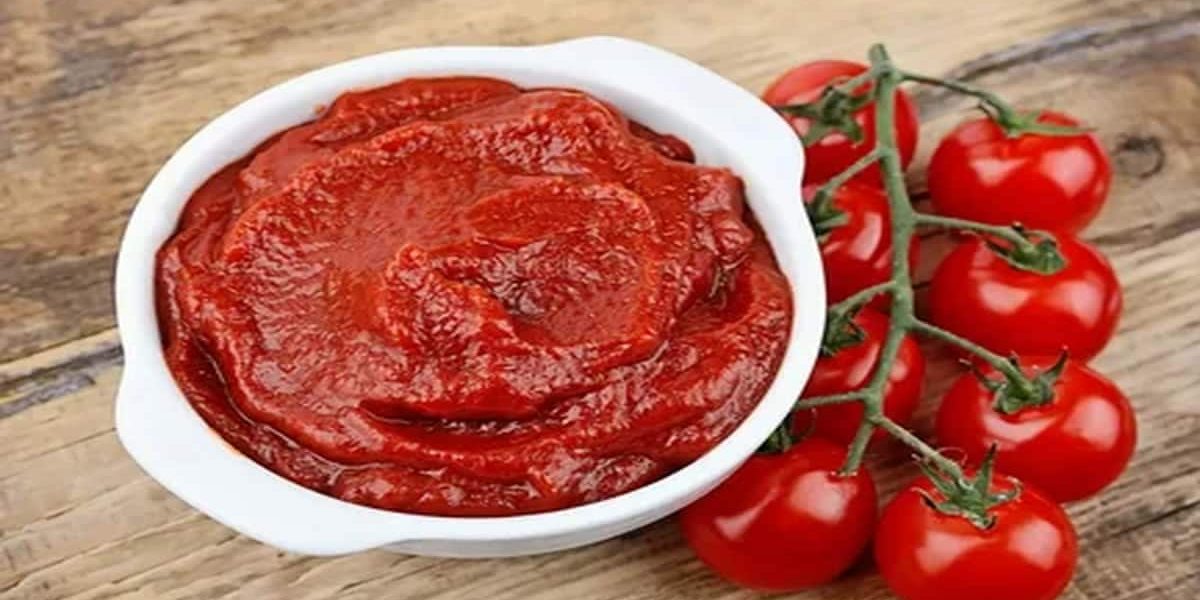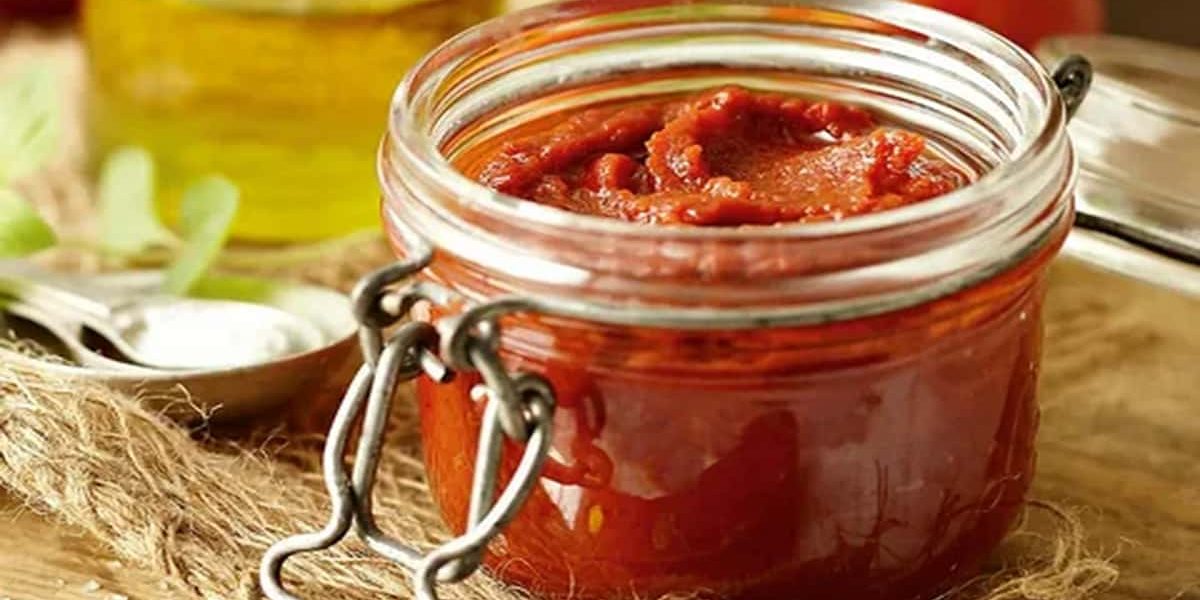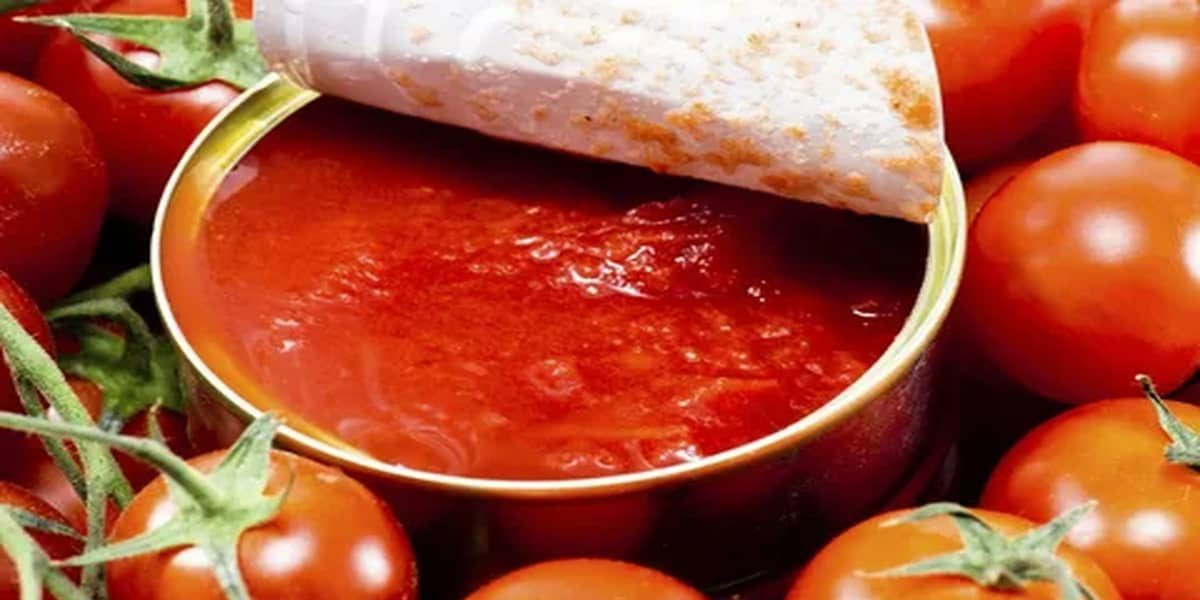Buy Aseptic Tomato Paste Types + Price
Many factors affect the final price of tomato paste
Aseptic production of tomato paste is one of the key factors that determine the price of the product
Aseptic Tomato paste is a substance that is often made up of one component, tomatoes, and has a thick and soft consistency
Tomato paste provides energy, vitamins, nutrients, and lycopene, a phytochemical, providing it a nutritious component to recipes as well as adding color to a variety of cuisines
It is also an excellent source of flavor
Cooking fresh tomatoes over low heat until they start breaking down into little pieces results in the production of tomato paste
After that, the skin and seeds are removed from them using a strainer, and they are processed until all of the moisture is removed and they turn into a thick paste
The quality of our Aseptic Tomato Paste is well known, and this is due to the fact that the item on offer is manufactured in a healthier way, which guarantees the highest quality possible
This tomato paste needs to be kept in a cool, dry place to maintain its quality

Tomato
This aseptic tomato paste is examined on a wide variety of quality parameters because it is in such high demand in the cooking of homes, cafeterias, hotels, and eateries
It is obvious that the production of aseptic tomato paste has a direct effect on the final price of the product
Aseptic production is usually done in tomato paste with high Brix
The whole production process is costly in this way
To pack in a barrel, the Brix tomato paste must be high
The range that is usually considered for Brix in barrel packaging is between 36-38
It is interesting to know that the production of aseptic tomato paste is for the purpose of maintaining the product’s shelf life and health without the need for refrigeration
Usually, aseptic tomato paste is packed in a barrel
The production process of tomato paste with high Brix as well as the aseptic process is expensive, which affects the price of the product

Tomato paste sauce UK
Aseptic tomato paste
Nowadays, thanks to new technologies, the production of tomato paste is carried out through aseptic processing
Aseptic manufacturing and packing is the loading of a technically sterilized commodity into sterilized plastic accompanied by strategies that can lead to sealing with a hygienic closure in a microorganism-free atmosphere
Owing to the combination of vitamins A and C and other elements, tomato serves as one of the most popular crops, playing a significant role in the well being of communities
It comes in paste, ready meals, soup, stew, paste, liquid ketchup sauce, puree, and tomato juice forms
It is ingested
This project’s principal objective is to identify orders to successfully carry for the manufacture of high-quality aseptic paste so that it can be sold on a broad market and suit the expectations of customers
The term aseptic is used a lot and in most cases, it refers to the type of packaging
Many standards are used in the packaging and production of aseptic tomato paste, this type of packaging is more common for the export of tomato paste
The production of aseptic tomato paste means that the packaging materials and containers of the tomato paste are sterilized first, and then the tomato paste is poured into them under a vacuum condition, and the packaging is done in a condition that prevents the entry and penetration of microbes
and these conditions can prevent the growth of microbes again
Aseptic production in Iran has been accepted for the export of paste to European countries, and tomato paste production is done less
The tomato paste production line has a more complex structure than bulk production and packaging in metal cans
In this type of packaging, the use of different packaging devices for paste in metal cans will not be used, and of course, the export of paste is done less with this method
Among the various devices of the tomato production line and its packaging, continuous, batch, pre-heater, capping, pasteurizer, Pasteur tunnel, filling, and capping are among the most important devices, each of which has different and distinct characteristics
Paste manufacturing factories use the preheater in two ways, hot break, and cold break

How to make tomato paste
The price of tomato paste
In comparison to industrial manufacturing, domestic products such as tomato paste have a lower price
One of the best suggestions might be that use homemade tomato paste instead of a commercial one The production of food is one of the most lucrative enterprises in the world due to the high demand for these products
There is tomato paste among these items
Tomato paste is one of the most popular food condiments in the world, particularly in Iran, where it is used in a variety of meals
As a commodity with high added value for conversion, this is one of the products whose manufacture has always been economically justified
In Iran, several varieties of tomato paste are offered under a variety of brand names, each of which has distinct qualities
Consequently, it is crucial to choose tomato paste with care, since the grade of tomato paste is one of the factors influencing the flavor and color of food
On the global marketplaces, the price of tomato puree or paste is determined by the quality of the paste and the recipe, despite the fact that the majority of people nowadays are seeking inexpensive tomato paste
According to the World Tomato Industry Council’s study, the global consumption of tomatoes in 2019 was approximately 35
32 million tons
This is despite the fact that consumption of this product in 2020 has increased and reached 37 million tons

Make tomato paste organic
Due to the rise in the cost of foreign exchange in the country and the overwhelming export of tomatoes and tomato paste, the price of paste has grown dramatically since the beginning of 2017
Setting up a small tomato paste manufacturing business can be a viable choice for producing this product on a small scale
In the past, tomato paste was usually prepared at home, and this practice persists today, albeit in a lesser size
Due to population growth, the expansion of industry and apartment living, and a shortage of time, food manufacturers are now responsible for preparing tomato paste
Even though the majority of tomato paste on the market today is produced industrially, when summer arrives, it becomes difficult for many vendors to obtain paste from fresh tomatoes
Some produce the paste for their own consumption, while others prepare it for sale and profit
There is an important question for all of these people, and that is how many tomatoes are needed to prepare a kilo of paste? Of course, the answer to this question will not be precise and specific and depends on various factors, but if fleshy and juicy tomatoes are used for making the paste and the concentration of the paste reaches the standard level, on average, one kilo of paste can be prepared from every 6 kilograms of fresh tomatoes
here are two types of local and greenhouse tomatoes available in the market, both types of tomatoes can be used and each one has advantages and disadvantages
It should be noted that local tomatoes give less paste, but it prevents the paste from getting moldy and spoiling later
Greenhouse tomatoes are more expensive but produce more paste
Usually, for every 100 kg of fleshy and juicy tomatoes, 10 to 15 kg of paste is obtained
The tomato products of our international company are known as the most popular products in the world market with the most up-to-date type of packaging








